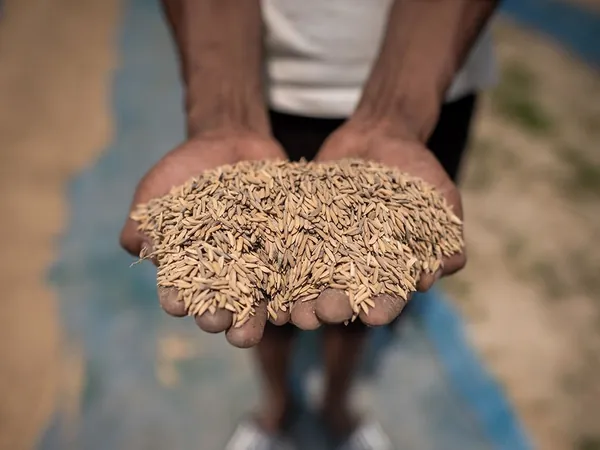
Rice and Arsenic: What You Need to Know and How to Stay Safe
2025-06-22
Author: Amelia
The Arsenic in Your Bowl of Rice
Arsenic contamination in rice has raised alarms once again. A revealing report from Healthy Babies Bright Futures (HBBF) examined 145 rice samples from stores nationwide and found that over a quarter of them contained more than 100 parts per billion (ppb) of inorganic arsenic — the maximum safe limit for infant rice cereal set by health authorities in Canada and the U.S.
The Hidden Danger in Your Diet
Health Canada has flagged rice, along with fruit juice, as major dietary sources of arsenic—a toxic element. But how concerned should you really be? According to food safety experts, the key is minimizing your exposure.
"Food safety is all about reducing risk," states Lawrence Goodridge, a professor from the University of Guelph and an expert in food science. He advises that cutting down on rice consumption can significantly lower your arsenic intake.
A Historical Perspective on Arsenic
In a historical context, arsenic was famously dubbed the "poison of choice" in the Victorian era, and its prevalence continues today. Keith Warriner, another food science professor at the University of Guelph, notes, "Arsenic is essentially everywhere. It's unrealistic to think we can completely avoid it."
Rice: More than Just a Staple
Despite the concerns, Warriner emphasizes that rice is an important staple in many diets, rich in cultural significance and health benefits. "Rather than forgoing rice completely, we can take measures to reduce the risks associated with it."
Practical Tips to Lower Your Risk
Wondering how to enjoy rice while ensuring your safety? Here are some effective strategies: 1. **Choose Rice Wisely**: Opt for varieties that tend to contain lower arsenic levels, such as basmati or jasmine rice. 2. **Rinse Thoroughly**: Washing your rice before cooking can help remove some of the surface arsenic. 3. **Cook in Excess Water**: Use a higher water-to-rice ratio, then drain the excess water after cooking. 4. **Diversify Grains**: Incorporate other grains like quinoa, barley, or farro to minimize reliance on rice.
Why Kids Are Most Affected
The toxic effects of inorganic arsenic are especially concerning for children. Health Canada warns that even low exposures during pregnancy or childhood can lead to serious health issues in adulthood, including cancer and cardiovascular diseases. Babies and young children are particularly vulnerable as their developing bodies are more susceptible to the harmful effects of toxins.
With these insights and strategies in mind, you can continue to enjoy your favorite rice dishes while taking steps to protect your health.









 Brasil (PT)
Brasil (PT)
 Canada (EN)
Canada (EN)
 Chile (ES)
Chile (ES)
 Česko (CS)
Česko (CS)
 대한민국 (KO)
대한민국 (KO)
 España (ES)
España (ES)
 France (FR)
France (FR)
 Hong Kong (EN)
Hong Kong (EN)
 Italia (IT)
Italia (IT)
 日本 (JA)
日本 (JA)
 Magyarország (HU)
Magyarország (HU)
 Norge (NO)
Norge (NO)
 Polska (PL)
Polska (PL)
 Schweiz (DE)
Schweiz (DE)
 Singapore (EN)
Singapore (EN)
 Sverige (SV)
Sverige (SV)
 Suomi (FI)
Suomi (FI)
 Türkiye (TR)
Türkiye (TR)
 الإمارات العربية المتحدة (AR)
الإمارات العربية المتحدة (AR)